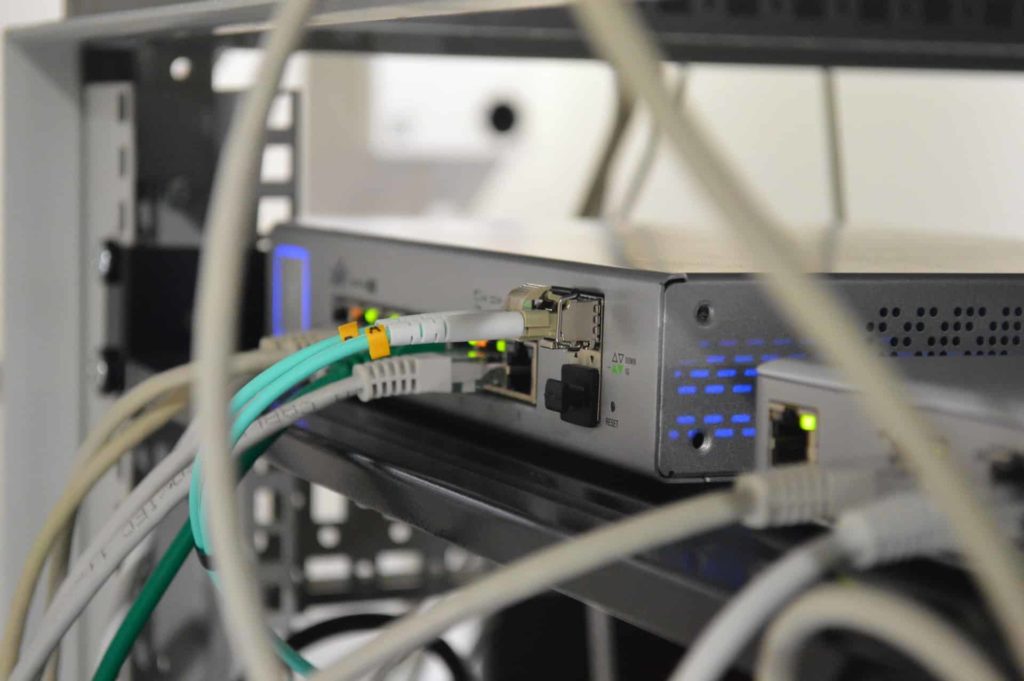In today’s rapidly evolving IT landscape, businesses are constantly seeking efficient and flexible solutions for application deployment. Two technologies that have gained significant popularity in recent years are containers and virtual machines. Containers and virtual machines offer distinct approaches to application deployment and provide unique benefits. In this article, we will explore the differences between containers and virtual machines, their use cases, and which option may be better suited for specific scenarios.
Related Link: Data Center Cable Plants Testing & Troubleshooting
Understanding Containers and Virtual Machines
Containers and virtual machines are both technologies that enable applications to be independent of underlying infrastructure resources. Containers are self-contained software packages that include an application’s code, libraries, and dependencies. They provide portability, allowing the same code to run seamlessly across different devices. On the other hand, virtual machines are digital replicas of physical machines. They enable multiple virtual machines, each with its own operating system, to run on a single host operating system. Virtual machines can encapsulate everything required to run an application, including the operating system.
Where Are Containers and Virtual Machines Used?
Both containers and virtual machines are widely used in deployment scenarios. In the software development lifecycle, deployment is a crucial step that ensures applications run efficiently on servers or devices. Applications often require various dependencies closely tied to the underlying operating system. These software layers between the application code and the physical device form the application environment.
Curious about the latest trends in the technology industry? Explore our blog for insightful articles and updates!
Challenges in Software Deployment
Deploying applications across different environments can introduce challenges and complexities. Organizations often need to deploy applications in multiple environments, such as developing on a Linux environment and testing on Windows, before releasing new features. However, moving applications between environments can lead to bugs and glitches due to missed dependencies. Moreover, managing multiple environments uniformly can increase development costs, and migrating applications between on-premises data centers and the cloud can pose significant challenges.
Purpose of Virtual Machines
Virtual machines were initially developed to optimize the utilization of physical hardware resources. By running multiple operating systems and environments on a single physical machine, organizations can make efficient use of available hardware capacity. Virtual machines allow for the creation of isolated environments, enabling the installation and management of different operating systems as needed.
Related Link: Fiber Optics vs Copper Cabling Compared
Purpose of Containers
Containers were designed to provide a predictable and repeatable way of packaging and running applications across various environments. Instead of recreating the entire environment, containers encapsulate the application and its dependencies, allowing it to run on any physical or virtual environment. Containers offer a lightweight approach to application deployment, similar to providing an astronaut with a spacesuit instead of recreating Earth’s atmosphere on another planet.
Similarities Between Containers and Virtual Machines
Both containers and virtual machines offer application isolation, enabling applications to run in multiple environments without interference. They abstract underlying infrastructure, eliminating the need for users to worry about the specific hardware or operating system details. Furthermore, containers and virtual machines allow software infrastructure to be packaged into image files, simplifying the setup and deployment process. Both technologies also support software processes for system configuration management and scaling.
Key Differences: Containers vs. Virtual Machines

While containers and virtual machines share similarities, they differ in their core technologies and functionalities.
How They Work
Virtual machines use hypervisors that mediate communication between the guest operating system running on the virtual machine and the host operating system. Hypervisors ensure resource sharing and isolation between multiple virtual machines running on the same hardware.
Containers, on the other hand, employ container engines or runtimes, with Docker being the most popular open-source container engine. Container engines act as intermediaries between containers and the operating system, managing the necessary system resources for the application.
Size
Virtual machine image files tend to be larger in size, typically several gigabytes, as they encapsulate the entire operating system. Servers, databases, networks, and desktops are just some of the things that can be split, abstracted, duplicated, and emulated by virtual machines. This comprehensive encapsulation provides flexibility but comes with larger storage requirements.
In contrast, container files are much smaller in size, usually measured in megabytes. Containers only package the specific resources required to run a single application, making them lightweight and highly efficient in terms of storage consumption.
Environment Configuration
Virtual machines offer developers greater control over the application’s environment. They allow manual installation of system software, the ability to capture configuration states through snapshots, and the flexibility to restore to a previous state if needed. This level of control makes virtual machines suitable for ideation, experimentation, and testing different environments to optimize application performance.
Containers, on the other hand, provide static definitions of configurations once the best practices have been established. Once a container image is created and tested, it can be easily deployed and replicated across various environments without the need for extensive manual configuration.
Software Development Speed
Virtual machines, being full-stack systems, can be time-consuming to build and regenerate. Any modifications to the environment require the regeneration of the entire virtual machine, which can be a time-intensive process. This makes virtual machines less suitable for agile development practices that involve frequent iterations and rapid release cycles.
Containers, on the other hand, excel in scenarios where development speed is paramount. As containers only include high-level software dependencies, they are much faster to modify and iterate upon. Developers can quickly build, test, and release new features, enabling faster innovation and deployment cycles.
Scalability
When it comes to scalability, virtual machines often require more storage space and hardware provisioning in on-premises data centers. While moving to cloud instances can reduce costs, migrating an entire virtual machine environment to the cloud poses challenges and complexities.
Containers, on the other hand, are lightweight and offer granular control over application scalability. By leveraging the concept of microservices, where applications are composed of small independent services communicating via well-defined APIs, containers enable scaling of individual microservices as needed. This fine-grained scalability ensures efficient resource utilization and flexibility in handling varying application workloads.
Choosing Between Containers and Virtual Machines

When deciding between containers and virtual machines for application deployment, several factors should be considered:
- Application Characteristics: Evaluate the nature of your application and its specific requirements. If your application is monolithic and tightly coupled with the operating system, virtual machines may be more suitable. On the other hand, if your application is modular, built with microservices architecture, and requires rapid scaling, containers may be the better choice.
- Development Lifecycle: Consider the development process and release cycles of your application. If you prioritize speed, frequent iterations, and continuous deployment, containers provide agility and rapid development capabilities. If stability, controlled environments, and rigorous testing are crucial, virtual machines offer a more controlled and isolated development environment.
- Infrastructure Flexibility: Assess your infrastructure requirements and constraints. Virtual machines may be preferable if you need to replicate entire environments with different operating systems or emulate complex network configurations. Containers, with their lightweight footprint and easy portability, are well-suited for cloud-native environments and hybrid cloud deployments.
- Resource Utilization: Evaluate the efficiency of resource utilization in your deployment environment. Virtual machines provide more isolation but consume additional resources due to the need to virtualize the entire operating system. Containers, being more lightweight and sharing the host operating system, offer better resource efficiency and scalability.
- Operational Complexity: Consider the operational complexity and management overhead associated with your chosen deployment option. Virtual machines require managing multiple operating systems, while containers simplify management with standardized images and orchestration tools.
Ready to enhance your business operations with cutting-edge technology solutions? Reach out to us now!
Deciding Between Containers and Virtual Machines
Containers and virtual machines offer distinct approaches to application deployment, each with its own set of advantages and considerations. Containers provide lightweight, scalable, and portable environments, while virtual machines offer comprehensive isolation and control. Understanding the differences between the two technologies and assessing your specific needs will help you determine which option is better suited for your organization. In many cases, a combination of both containers and virtual machines can provide a powerful and flexible solution for modern application deployment.
Related Link: Cable Jacket Ratings: What Does Your Cable Need?
Last Updated on June 8, 2023 by Josh Mahan




